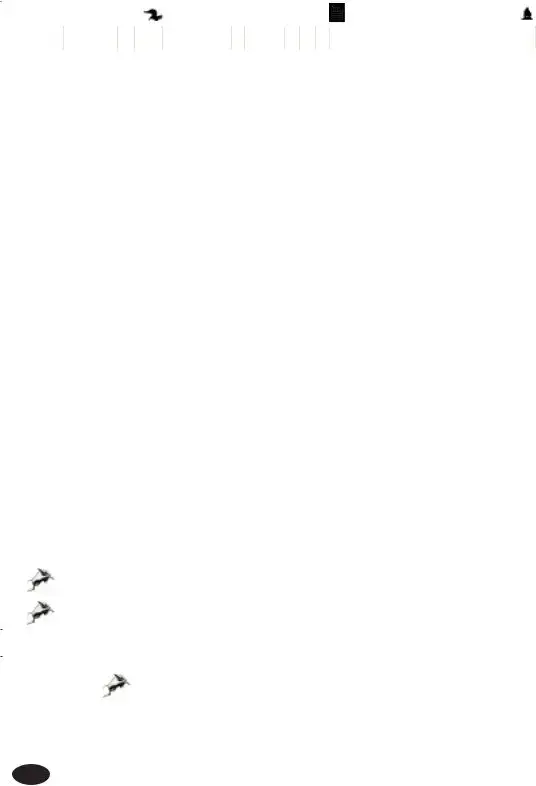
32. OVERPAYMENT If Line 30 is less than Line 31h, subtract Line 30 from Line 31h . . . . . . . . . . . . . . . . . . . . . . . . . . . . . . . . . . . . . 32.
33a. REFUND TO BE CREDITED TO 2009 ESTIMATED TAX PAYMENT
Amount on 31d cannot be credited to 2009 estimated tax payment. . . . . . . . 33a.
33b. REFUND TO BE CREDITED TO 2009 PROPERTY TAX BILL . . . . . . . . . . . . 33b.
34. REFUND AMOUNT (Subtract Lines 33a and 33b from Line 32). . . . . . . . . . . . . . . . . . . . . . . . . . . . . . . . . . . . . . . . . . . . . . . . . . . . 34.
31a. VT Tax Withheld (Attach state copy of W-2, 1099, etc.) . . . . . . . . . . . 31a.
31b. 2008 Estimated Tax or Extension Payments . . . . . . . . . . . . . . . . . . . 31b.
31c. Earned Income Tax Credit (Schedule IN-112, VT Calculation C) . . . . . 31c.
31d. Renter Rebate (Form PR-141, Line 9) . . . . . . . . . . . . . . . . . . . . . . . . . . . 31d.
31e. VT Real Estate Withholding (See instructions on page 9). . . . . . . . . 31e.
31f. Business Entity Payments for Nonresident Partner,
Member, or Shareholder (Form WH-435, see page 9) . . . . . . . . . . . . . 31f.
31g. Low Income Child & Dependent Care Credit
(See instructions on page 9) . . . . . . . . . . . . . . . . . . . . . . . . . . . . . . . . . . . 31g.
31h. TOTAL PAYMENTS AND CREDITS (Add Lines 31a through 31g) . . . . . . . . . . . . . . . . . . . . . . . . . . . . . . . . . . . . . . . . . . . . . . . . . 31h.
00
00
00
00
00
00
00
00
00
00
00
00
29a. 29b. 29c. 29d.
30. TOTAL OF VT TAXES & VOLUNTARY CONTRIBUTIONS (Add Line 28 and Line 29d). . . . . . . . . . . . . . . . . . . . . . . . . . . . . . . . . . 30.
00
Original refund received ________________ Refund due now __________________ Original payment_________________ Amount due now _______________
23. 24. 25.
CREDIT FOR INCOME TAX PAID TO OTHER VT TAX CREDITS (Schedule IN-112, TOTAL VT CREDITS
STATE OR CANADIAN PROVINCE VT Calculation D, Line 6 OR Schedule IN-119) (Add Lines 23 and 24)
(Schedule IN-112, VT Calculation B, Line 6)
26. VT INCOME TAX AFTER CREDITS (Subtract Line 25 from Line 22, but not less than zero) . . . . . . . . . . . . . . . . . . . . . . . . . . . . 26.
27. USE TAX (See page 8 for instructions and chart) . . . . . . . . . . . . . . . . . . . . . . . . . . . . . . . . . . . . . . . . . . . . . . . . . . . . . . . . . . . . . . . . . 27.
28. TOTAL VT TAXES (Add Lines 26 and 27) . . . . . . . . . . . . . . . . . . . . . . . . . . . . . . . . . . . . . . . . . . . . . . . . . . . . . . . . . . . . . . . . . . . . . . . 28.
Signature Date Occupation Telephone Number (optional)
Signature. If a joint return, BOTH must sign. Date Occupation
Under penalties of perjury, I declare that I have examined this return and accompanying schedules and statements, and to the best of my knowledge
and belief, they are true, correct and complete. Preparers cannot use return information for purposes other than preparing returns.
Check here if authorizing the VT Department of Taxes to discuss this return and attachments with your preparer.
Keep a copy for your records.
Preparer’s
Use Only
Preparer’s signature Date Preparer’s
SSN or
PTIN
Firm’s name (or yours if self-employed) and address EIN
Preparer’s Telephone Number
Form IN-111
35. If Line 30 is more than Line 31h, subtract Line 31h from Line 30. See page 10 for instructions on tax due.. . . . . . . . . . . . . . . . . . 35.
36.
--
--
+
+
=
+
=
.
,
.
,
.
,
.
,
.
,
.
,
.
,
Carried forward from Line 22 _____________________________
.
,
,
.
,
,
.
,
,
.
,
,
00
.
,
,
.
,
,
.
,
,
*081111200*
* 0 8 1 1 1 1 2 0 0 *
Nongame Wildlife Fund Children’s Trust Fund VT Campaign Fund
For amended
returns only
Interest and Penalty on Underpayment of
Estimated Tax (Worksheet IN-152 or 152A)
37. Add Lines 35 and 36 . 37.
16
00
.
,
,
00
.
,
,
00
.
,
,
00
.
,
,
00
.
,
,
00
.
,
,
00
.
,
,
00
.
,
,
00
.
,
,
00
.
,
,
00
.
,
,
00
.
,
,
Credits and Use Tax
5
Contributions
6
Payments and Credits
7
Due
9
Signatures
10
Refund
8
Check if age
65 or older

